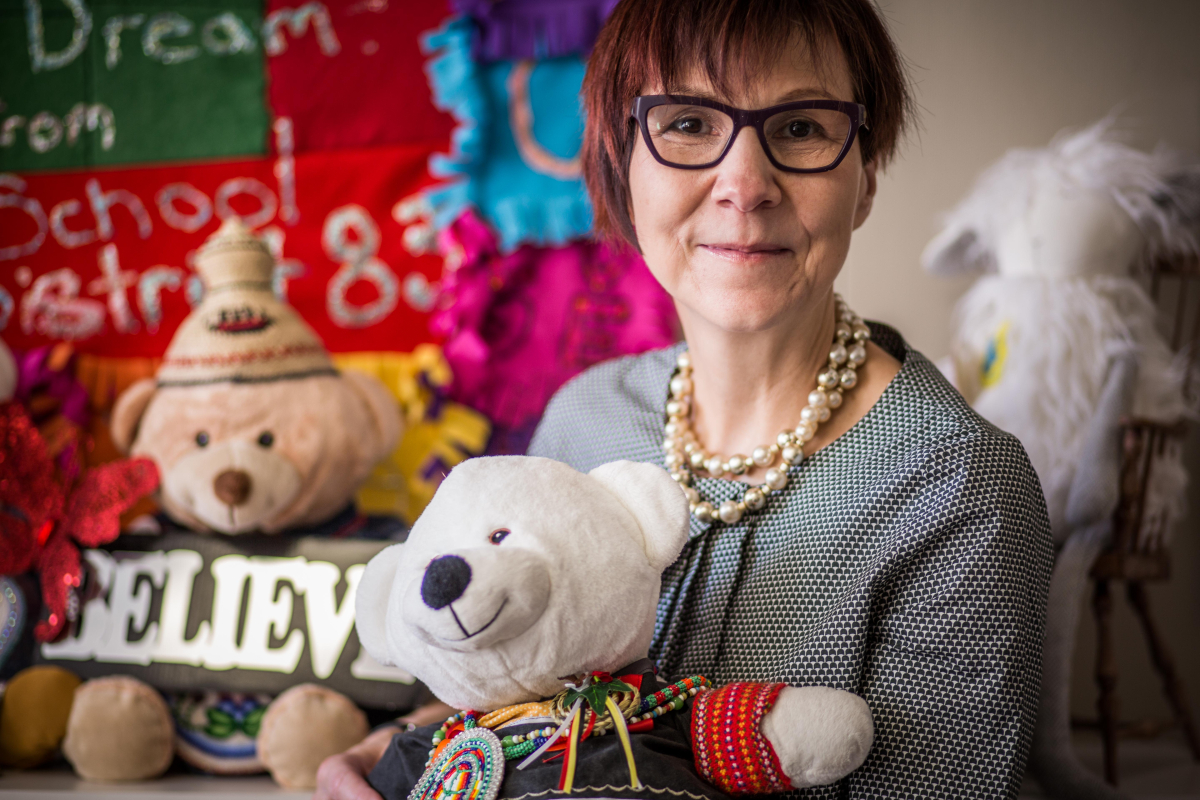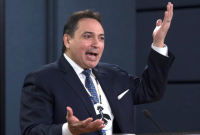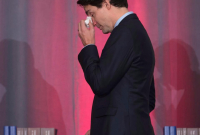Support strong Canadian climate journalism for 2025
The numbers are shocking — in 2016, the federal government was found by the Human Rights Tribunal to be racially discriminating against the estimated 165,000 First Nations children who live on reserves.
Aboriginal children are vastly over-represented in Canadian child welfare statistics, both on and off reserve: In 2016, a Statistics Canada report found that while Aboriginal children made up seven per cent of all children in Canada in 2011, they accounted for almost half (48 per cent) of all foster children.
In British Columbia, an Aboriginal child is 17 times more likely to be in care than a non-Aboriginal child, according to a report by the province's representative for children and youth, Bernard Richard.
The names behind those statistics are very real: Sarah, Anthony, Mikwan, Paige, Alex, Santannah, Jenera, Jolynn and Chantell were all Aboriginal, young and vulnerable.
All died under today’s system.
Despite the mounting numbers of deaths of Aboriginal children, several scathing reports by child advocates, and the prioritization of child welfare as the No. 1 call to action by the Truth and Reconciliation Commission, several of Canada’s top children’s advocates say services for Aboriginal children are falling short and change is slow to come.
In a report earlier this year, Bernard Richard called the disproportionate numbers of Aboriginal children in care “an embarrassment to the community” and called the federal and provincial funding of Aboriginal child welfare agencies “flawed and discriminatory.”
In 2016, the Canadian Human Rights Tribunal found that the federal government discriminates against First Nations children and families living on reserves by denying them equal child and family services to those received by other children.
The Truth and Reconciliation Commission listed child welfare first in its recommendations to redress the legacy of residential schools, with a goal of reducing the number of Aboriginal children in care, mainly by supporting families to stay together so children do not become government wards in the first place.
These calls echo other advice, including 85 similar recommendations made by Grand Chief Ed John in a 2016 report to the B.C. government on Indigenous child welfare.
Despite all of this, the underfunding and problems continue.

Leading the Fight
Cindy Blackstock, executive director of the First Nations Child and Family Caring Society of Canada, says she’s “very concerned” about the government’s progress on the TRC recommendations, particularly because of its inaction on the Human Rights Tribunal’s ruling.
While in opposition, Prime Minister Justin Trudeau's Liberals committed to following through on all the commission's 94 calls to action.
“They are not taking action and really obfuscating and making excuses for not taking action,” Blackstock said. “In 2016, the government (was) found to be racially discriminating against 165,000 kids. That’s a pretty horrible thing.”
Blackstock has led the national fight in this field. The Caring Society was the lead complainant in the Human Rights Tribunal case, which has now been the subject of three non-compliance orders, the last of which was linked to the suicide deaths of two Wapekeka First Nation children in Ontario because Canada didn’t provide mental health intervention.
Blackstock expects a fourth non-compliance order to be handed down, specifically on child welfare, in the next days or weeks. She says her organization has submitted many proposals to get the government into compliance, but it has ignored them.
Blackstock estimates that it would cost about $155 million to relieve the most egregious effects of the discrimination, plus additional funds to implement Jordan’s Principle, which says that when there is a jurisdictional dispute about who should pay for services for a First Nations child, the government department of first contact pays for the service first, then seeks reimbursement after the child has been helped.
The federal government is responsible for on-reserve child welfare, while provincial governments are responsible for off-reserve care.
Blackstock says the child welfare agencies operating on reserves have been chronically underfunded and that they don’t have the resources to keep more children in their homes.
“That’s why we’ve been so profoundly disappointed by the government’s response to (the Human Rights Tribunal’s) decision in January,” Blackstock said.
But the Canadian government insists the wellbeing of Indigenous children is a priority.
“Prevention is a cornerstone of the government’s overarching plan to reduce the inequities that too many First Nations children experience,” said Valerie Hache, spokeswoman for Indigenous and Northern Affairs Canada.
“We are engaging with our First Nations partners about how best to support prevention and well-being. Last spring, the government of Canada committed to spend $635 million more on child and family services over the next five years; for British Columbia, this means an additional $51.2 million dollars over five years. This funding is directed to First Nations delegated agencies in British Columbia to meet funding gaps in the protection work of the agencies and to provide prevention services.”
INAC funds more than 100 on-reserve child welfare agencies to the tune of $788.9 million a year, Hache said.
But Blackstock says that’s not enough, and that other problems like poor housing, poverty and substance misuse related to the intergenerational harm of residential schools contribute to the inability of parents to look after their children.
“The good news is that we can do something about all of those things,” Blackstock said.
“The bad news is that the government hasn’t taken a holistic view, which is to publish (a comprehensive plan) on how they would end all inequality across all dimensions of children’s experience(s).”

Structural problems with the child welfare system
The structure of the child welfare system doesn’t allow it enough flexibility to help with small things that can stabilize a family, such as first and last month’s rent or a washer and dryer to help with laundry, she said, adding that an American initiative – the Family Unification Program – was able to save 7,200 children from going into foster care and tens of millions of taxpayer dollars just by providing minor supports such as those.
“All the good research says that when you stabilize housing, families are much more able and much more successful at handling addictions and mental health issues,” Blackstock said. “They found that 91 per cent of those families had not come back to the attention of child welfare (one year later).”
Sometimes, a child welfare agency gets more money to take a child into care than it does to provide support, said Richard.
“I think they (the federal government) provide an incentive to taking kids into care,” Richard said.
“Directive 20-1 provides 100 per cent of the costs if a child gets taken into care, but there is scant funding for prevention services and family support.”
Richard also emphasized that equal funding wouldn’t be enough – the effects of residential schools and the '60s Scoop mean Aboriginal child welfare needs even more funding than its non-Aboriginal counterpart.
“The intergenerational trauma has to be addressed – it’s significant and it won’t go away on its own,” Richard said. “It has resulted in addiction and alcoholism and it has led to broken families, and sometimes physical abuse and sexual abuse. Resources are required to support those families, resources in addition to child welfare funding.”
Richard says poverty, housing, trauma and addictions all have to be addressed in concert with child welfare, and to be successful child welfare practices have to include Indigenous cultural practices, cultural training, elder teachings and Indigenous customs.
Family focused solutions
One Vancouver inner-city non-profit organization is trying some innovative strategies to keep families intact.
Jenny Shantz, executive director of Inner Hope Youth Ministries, said she tries to operate her organization in a family style, including extended family members as often as possible. Inner Hope provides mentoring and some housing services, mainly to youth aged 16 to 24, many of whom have been foster children. It does not receive any government funding, something Shantz says allows it to operate more like a family.
One young woman, who is now in her 20s, but whom Shantz has known since she was a child, recently called Shantz in a crisis. Social workers and police had been to her house and threatened to take her children.
“I got a phone call that social workers were coming back and if there (weren't) proper beds for the babies, they could be taken,” Shantz said. “So, I ran over two playpens and a bag of diapers and wipes. We hosted a meeting (with the family and social workers) a week later and they reneged an order to apprehend the children.”
Now, the children are going to live with relatives while the parents get some support, Shantz said.
“The parent went through a lot in her life, as most of our young people do,” Shantz said. “They’re not bad kids. They’re not kids who want to get into trouble … but there are often generational cycles that they’re working to break. Change doesn’t happen overnight.”
But change can’t come quickly enough for Blackstock and others.
“We have kids who are being reported with child maltreatment every single day and some are suffering irrevocable harm because there is not enough prevention services to keep them in their families,” Blackstock said.
“This isn’t a five-year out plan. We’re dealing with kids who are growing up right now.”
Tracy Sherlock writes about social issues and education. She can be reached at [email protected]
Editor's note: This story has been changed to clarify Cindy Blackstock's estimate of how much it would cost to address the effects of discrimination and implement Jordan's Principle.






Comments
Happy 150 years Canada of continuous cultural genocide. PM Trudeau and his government are proudly carrying on this Canadian tradition. We should be ashamed to the depth of our souls. I hear for many people "Why should we be responsible for something our ancestors did?" Let's look in the mirror fellow Canadians to see the face of cultural genocide in action."